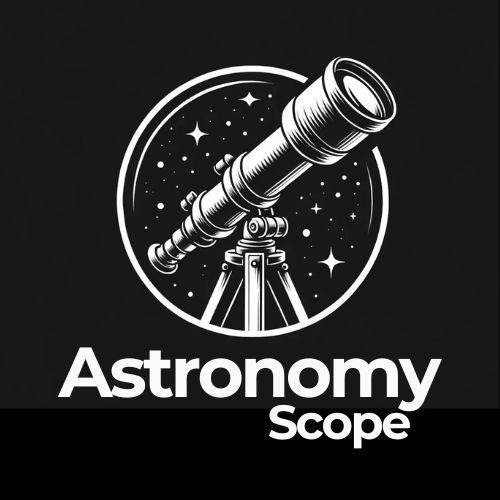Most people know what the North Star is, and on a dark evening, it tends to shine much brighter than surrounding stars. Although depending on your viewpoint from Earth, the North Star (Polaris) may or may not be visible depending on if you’re on the North or Southern Hemisphere.
So, can you see the North Star from the Southern Hemisphere? You can see the North Star from the Southern Atmosphere, but only in very specific places, at specific times, and if atmospheric conditions are optimal. Typically, this will be around 1.23 degrees south of the equator. The star is, unfortunately, not visible for most locations south of the equator.
For reference, the North Star can be seen at about a 41-degree angle in the Eastern United States.
If you were to travel South then, the star would start to get closer to the horizon.
Once you cross the equator into the Southern Hemisphere, Polaris will disappear into the horizon, causing it to be hidden from view in the Southern Hemisphere.
When Can You See the North Star From the Southern Hemisphere?
Although it may be tricky depending on your location’s atmospheric conditions on Earth, the best time to view the North Star from the Southern Hemisphere would be in the dark of night, allowing the star to shine as bright as possible.
Since Polaris doesn’t sit at a perfect 90-degree angle, it shows up just above the horizon in the Southern Hemisphere, right below the equator.
Atmospheric conditions like clouds, temperatures, and varying wind densities can affect how visible the North Star is below the equator.
So, even if you’re standing in the right spot in the Southern Hemisphere, some atmospheric conditions may not allow you to see Polaris, even in the middle of the night.
Luckily, on a clear evening with stable conditions in the atmosphere, the North Star is much brighter than its surrounding counterparts and should be easier to find on the horizon regardless.
When you’re in the Northern Hemisphere, there aren’t many atmospheric conditions other than clouds that get in the way of viewing Polaris.
In the Southern Hemisphere, even though the star doesn’t rise or set like the Moon, there are a handful of atmospheric illusions that assist you in being able to view it just below the equator.
Our atmosphere and the Earth’s curvature are primary factors in why objects on the horizon seem taller than they are in reference to the Earth itself.
Factors like light dispersion and chromatic aberration will affect the stars’ viewability.
If the North Star sat at an exact 90 degrees, no one below the equator would ever see the star.
How To See The North Star From the Southern Hemisphere
Unfortunately, for most of the Southern Hemisphere, you won’t be able to see the North Star. There is a sweet spot roughly 1 degree South of the equator that would allow you to get a glimpse of Polaris near the horizon.
A primary factor for this is that the star doesn’t sit directly above the Earth’s north pole.
It sits at an angle of 89.34 degrees, and if it were directly above our North Pole, it would be at precisely 90 degrees.
Additionally, Earth’s atmosphere refracts light and causes dispersion of that light.
This causes things on the horizon to appear at a higher altitude to the human eye, giving the star an additional 0.57 degrees in altitude.
With Polaris already have a 0.66-degree difference from the North Pole, this would come to a total of 1.23 degrees South of the equator.
This is the only sweet spot you’ll get a glimpse of the North Star in the Southern Hemisphere.
You can stand 1.23 degrees South of the equator anywhere globally and still get the same result on the horizon.
This is all based on recent data within the last couple of years; as things change in the Universe, so will the North Star’s position to the Earth.
For example, Polaris will be at a declination of 44.62 degrees in 12,600 years.
Around this time, the star will be found over the skies of Australia and Africa.
Currently, even if you look for the star near the horizon just below the equator, you may not be able to see it due to atmospheric conditions and other surrounding stars.
Here’s another way to find Polaris, considering its part of the constellation “Little Dipper,” and can be found at the end of the handle.
Specifically, you can look for the stars Mehrak and Dubhe and find your path to Polaris by drawing a line between the two and expand it about five times. Then, you’ll be in the vicinity of the North Star.
Can You See the North Star From Anywhere?
The North Star is quite close to our North Celestial Pole, and because of this, it’s only fully visible from the Northern Hemisphere. It can also be seen just above the horizon of the sky, 1.23 degrees south of the equator, and with the right conditions.
Polaris is considered circumpolar, which means it never rises or sets, even though the star can be viewed at various angles across the Northern Hemisphere.
This means that Polaris can be seen from anywhere to those North of the Equator on a clear evening.
When it comes to the Southern Hemisphere, under the right conditions, it can be seen from anywhere roughly 1 degree South of the Equator.
Additionally, if you were to stand at the North Pole and look directly above you, the North Star would look centered to you and would seem to barely move at all, as it’s circumpolar.
Most people assume that Polaris is the brightest star we have, but this isn’t the case.
The North Star shines at 2nd magnitude; with some other stars being very bright, they go into negative magnitudes.
This type of astronomer scale displays the magnitude of the brightness of an object, with smaller numbers referring to brighter objects.
Additionally, Polaris is 4,000 times more luminous than our sun. This and the fact that it’s the closest Cepheid variable to Earth make it seem so much brighter than surrounding stars.
What Stars Can Only Be Seen in the Southern Hemisphere?
There are quite a few options, but the main point of interest for Southern Hemisphere stargazing is the Southern Cross (Crux). The Stars Acrux and Gacrux point towards the Southern Celestial Pole. Combine these with the Stars; Mimosa, Imai, Ginan, and this forms the Southern Cross.
Additionally, there are three primary circumpolar constellations for the Southern hemisphere.
These are; Centaurus, Crux, and Carina and contain many stars visible from the Southern Hemisphere.
Carina is known for the second brightest star in the night sky, Canopus, along with other notable Stars like Eta Carinae.
Within the Centaurus constellation, you’ll find two of the top ten brightest stars in our night sky, Alpha Centauri and Beta Centauri.
Alpha is a triple star system, making it the third brightest point in the sky outside our solar system.
Beta Centauri has a magnitude of 0.61 and makes it the second brightest light in the Centaurus constellation.
Perhaps one of the most dazzling sights in the Southern Hemisphere night sky is the Jewel Box cluster.
Although small, it is a red star surrounded by what is referred to as blue jewels, and there are hundreds of them—considering the size of this star cluster, it’s best seen through a telescope.
Now, let’s shed some light on the impressive Eta Carinae.
This star is one of the largest star systems that we know in existence and never sets below the horizon in the Southern Hemisphere.
Additionally, it’s circumpolar South of latitude 30 degrees South.
The Eta Carinae star system is 5 million times more luminous than the sun and has about 90 times more mass.
On an interesting note, this star had an “imposter” supernova event back in mid 19th century.
At that time, the star threw off ten solar masses, causing it to form the surrounding Nebula, Homunculus.
The gaseous burst that created this Nebula is still traveling through space at a rate of 1.3 million miles per hour.
The last star we’re going to discuss is Canopus, a bright star with white and blue colors.
This star has run out of hydrogen, is burning its core for quite some time, and is now in the blue loop phase of its life cycle, getting hotter and hotter before it cools again.
With its luminosity being 10,700 times that of the sun, this is why this star shines bright with blue and white color.
When viewing stars circumpolar to the Southern Hemisphere, some will appear North of the Equator a few degrees.
Although the famous North Star can only be seen in all its glory in the North Hemisphere, it’s no doubt the Southern Hemisphere has its fair share of astronomical wonders.
Finally
For most, the North Star (Polaris) cannot be seen from the Southern Hemisphere.
But that does not mean it is not possible.
Some locations, such as those 1.23 degrees south of the equator, can usually see it. At least when atmospheric conditions are right.
And while this may sound unfortunate, thankfully there is a range of other stars to look out for that offer scintillating and breathtaking views, instead.
Check out my other guides:
- How Many Stars Are Visible From Earth Without A Telescope?
- Why Do Stars Twinkle Red And Blue? [This Is Fascinating!]
- When Is The Best Time To Go Stargazing? [For The Best Views]
- Why Do Planets Look Like Stars [And How To Tell The Difference]
- Telescope or Binoculars For Stargazing [How To Decide]
- Do Stars Move At Night?
- Do Stars Burn Out?
- Why Do Stars Appear To Move Across The Sky?

Hey, my name is Jeremy. I’m a passionate and seasoned astronomer who loves nothing more than observing the night sky. I also love researching, learning, and writing all things Space and the Universe. I created Astronomy Scope to share my knowledge, experience, suggestions, and recommendations of what I have learned along the way while helping anyone to get into and maximize their enjoyment of the hobby.

